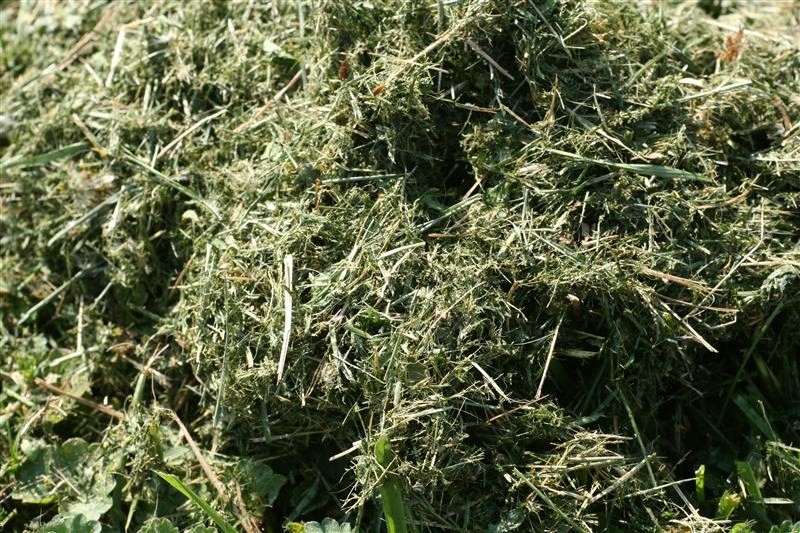 As if mowing the lawn wasn’t trouble enough, dealing with and disposing of grass clippings is a major pain.
As if mowing the lawn wasn’t trouble enough, dealing with and disposing of grass clippings is a major pain.
Clumps of grass clippings left on the lawn are unsightly and cause the grass beneath them to turn yellow due to a lack of sunlight as well as oxygen.
That problem is somewhat eliminated if you have a bag attachment on your mower, but handling the grass clippings extends the chore of mowing by taking extra time and effort to repeatedly empty the bag. Then, once clippings are put in garbage bags and placed on the curb, our municipal waste handlers must deal with them.
What to Do?
On the other hand, if we manage our lawns correctly and use proper cutting practices, we can have nice lawns without bagging clippings.
Properly managed, grass clippings will not contribute to thatch buildup or other problems. As they decompose, grass clippings also can supply much of the nutrients needed by your lawn.
Since you’ve already got it, why throw it away?
Bag-free Lawn Care Plan
 You can follow this bag-free lawn care plan using a traditional lawn mower:
You can follow this bag-free lawn care plan using a traditional lawn mower:
- For an established lawn, cut at the lower recommended cutting heights for your grass and use the lowest recommended amount of fertilizer. Mowing grass at a lower height will discourage thatch build-up.
- The rule of thumb for when to mow is to remove no more than about one-third of the leaf area at a time. If this practice is followed, the clippings will be small enough to sift into the turf and naturally decompose near the soil surface.
- To be successful, you will need to mow frequently enough so that the clippings are not too large. This may mean that the lawn can’t necessarily wait until Saturday morning. You must also mow at the recommended height. To ensure that your blade is set at the recommended height, set the mower wheel height on a concrete surface.
Here are some recommendations on various grasses and the heights at which to mow the grass:
- Common Bermuda: mow at approximately 1½ inches.
- Hybrid Bermuda: mow at approximately 1¼ inches.
- Zoysia: mow at approximately 2 inches.
- St. Augustine: mow at approximately 3 inches.
- Centipede: mow at approximately 2 inches.
Under the bag-free plan, you may apply a second application of fertilizer to your lawn this month (The first application should have been done in late April.). But remember that fertilizing grass increases its rate of growth. Reducing the amount of fertilizer you apply to the lawn will reduce the amount of clippings you will have to deal with. However, the one turf I would completely eliminate from a second fertilizer application annually is centipede. Too much fertilization in centipede can cause many more problems than any benefits that may arise from it.
A complete turf fertilizer is recommended for the average lawn. The best is a blend with more nitrogen, little phosphorus and some potash. Fertilizers with nitrogen, phosphorus and potassium ratios of 3:1:2 or 4:1:2 are good for turf. Choose a blend that contains some controlled-release nitrogen for longer feeding.
Don’t forget that recycled clippings also add nutrients, so fertilize at one-half the recommended rates – or not at all – if the grass color, growth and general appearance are acceptable.
Other practices will add to your success. First, don’t over water your lawn. During the hottest summer period lawns don’t need more than about an inch of water a week. Water as needed for weather conditions, and wait until the grass actually shows some stress before watering. Drought-stressed lawns often appear slightly faded, and the grass blades may be folded or rolled up.
Cut your grass when the leaf blades are dry (wait for the dew to dry). The clippings will sift down to the soil better. Make sure your mower blades are sharp, and keep the mower housing clean for best cutting and movement of clippings. You may need to have your mower blade sharpened once or twice in the growing season to properly cut your grass rather than having a dull blade ear your grass.
If you own or are thinking of buying a mulching mower, you’ll find they do an excellent job of chopping grass clippings and fit very well into this kind of program. Because these mowers are designed specially to chop grass clippings finely and return them to the lawn, they are a bit more forgiving if you wait slightly longer than recommended before mowing. Always avoid letting the grass get excessively tall before you mow.
For more in depth lawn care information, consult “Your Florida Lawn” or contact your County Extension Agent.
